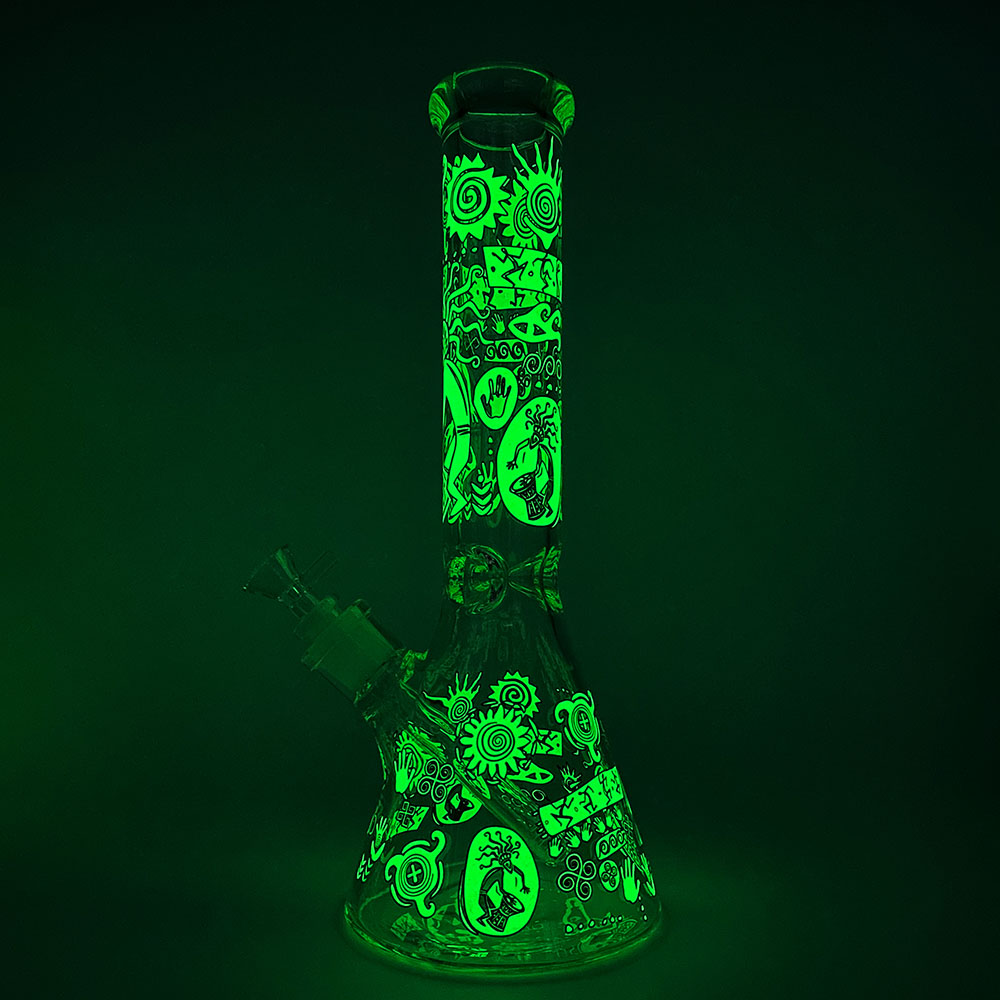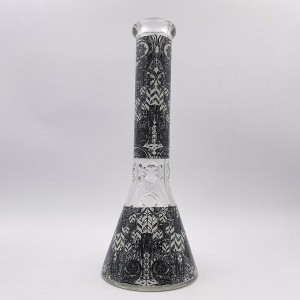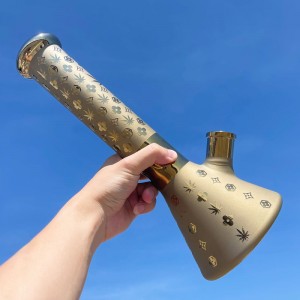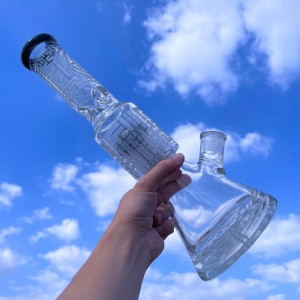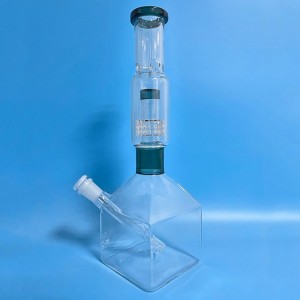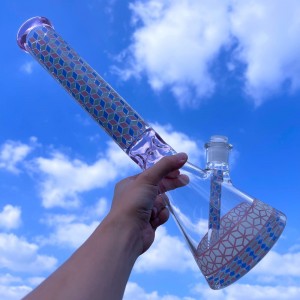
Products
Glass Water Pipe Shisha Hookah Glass Smoking Pipe Smoking Accessories Glass Beaker Pipe
Production Process:
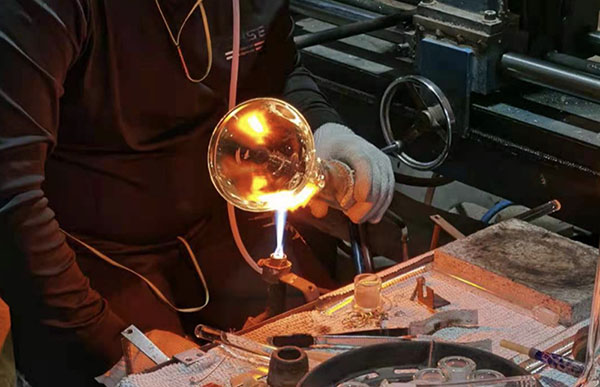
Step 1: Forming the Water Chamber
As with most other glass weed pipes, glass blowers start out with a long thin tube of glass. The first step in making a bong is generally to form the water chamber, as this also serves as the base for the entire pipe.
The glass blower uses a blowtorch to apply heat to the glass tubing. This expands the glass into a much larger cylinder. Using a hollow steel pipe or a tool called a blowpipe, the artist then blows air into the hot glass, making it bulge up into a large, bulbous bubble. While blowing into the glass, the artist must continually rotate the glass tubing to ensure that the expanded base does not become lopsided or uneven.
While the glass remains hot, the blower shapes the chamber until it reaches the desired size and shape. When the water chamber has been shaped, the artist uses a special tool to punch a hole in the side of the chamber. This is eventually where the downstem will fit.
Step 2: Making the Neck
The glass blower then applies heat to the glass tubing directly above the water chamber. As this part of the tubing expands into a larger cylinder, the blower again keeps the entire thing rotating smoothly and evenly. Often, a lathe is used to keep the cylinder perfectly uniform. The glass blower will continue this process until they achieve a cylinder long and wide enough to serve as the neck of the bong.
Step 3: Shaping the Mouthpiece
Now that the neck of the bong now successfully formed, the glass blower focuses on shaping the mouthpiece, located at the very top of the neck.
To do this, they again apply heat to make the glass malleable. From there, they begin separating the widened neck from the remainder of the initial glass tubing. When the neck breaks free from the tubing, the artist rotates the pipe to maintain a uniform shape and size and then carefully smoothes the top of the neck into a mouthpiece, ensuring that there are no sharp edges.
Step 4: Downstem and Bowl
Most bongs use removable downstems and bowls, which requires the glass blower to make these components in addition to the bong itself. These pieces are made using same glass-blowing techniques used to create the bong: heating glass tubing until it becomes malleable and using a combination of spinning, blowing, and tools to widen, shape, and otherwise manipulate the hot glass.
Obviously, the downstem and bowl will have much smaller diameters and openings than the bong itself. The downstem should fit snugly inside the hole punched into the side of the water chamber. Similarly, the bowl must be the right size to slide easily in and out of the downstem.

